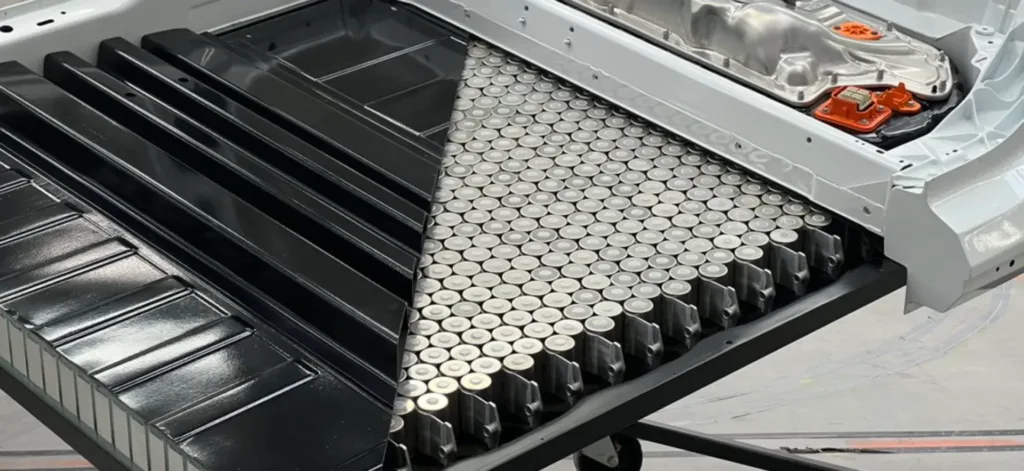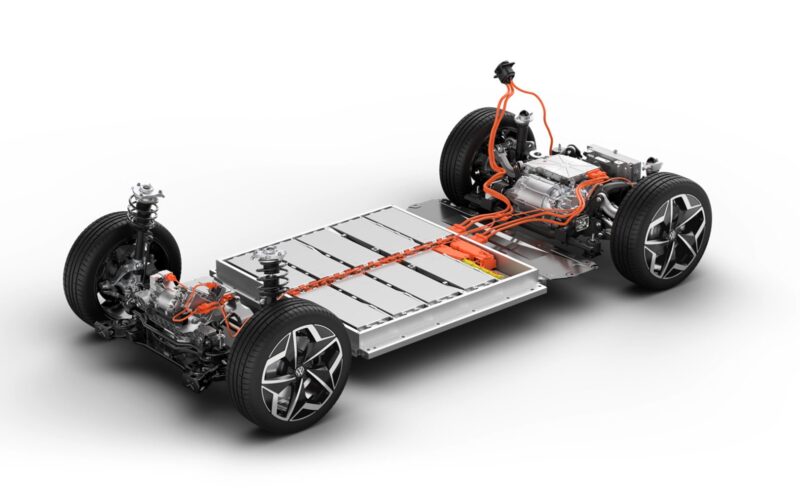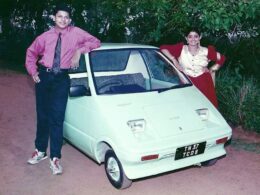As the world continues to move towards sustainable energy, electric vehicles are becoming increasingly popular. One of the key components that make these vehicles run is their battery. In this article, we’ll explore the different types of batteries used in electric vehicles, their pros and cons, which vehicles in India use them, and some tips on how to protect and keep your vehicle battery safe.
Lead Acid Battery: The Reliable Workhorse (of the Past)

Lead-acid batteries were first developed in 1859 by Gaston Planté and have been used in various applications ever since. These batteries use lead plates and sulfuric acid to store and release electrical energy. They have a low energy density compared to lithium-ion batteries, but they are often used in conventional vehicles and some electric vehicles. Lead-acid batteries were commonly used in electric two-wheelers and three-wheelers in India. For example, the Mahindra Treo electric three-wheeler use to have a lead-acid battery.
Pros of lead-acid battery:
- They are the cheapest option for EV batteries.
- They are well-established and have been used in EVs for many years.
- They are recyclable and have a relatively low environmental impact.
- They can handle high currents and are durable.
Cons of lead-acid battery:
- They have a relatively low energy density, which means they have a limited range.
- They are heavy and bulky, which affects the overall weight and design of the vehicle.
- They have a shorter lifespan compared to other battery types.
- They require regular maintenance and can be prone to sulfation if not maintained properly.
Lithium-Ion Battery: The Reining Champion

Lithium-ion batteries have become the most popular type of rechargeable battery for use in electric vehicles, smartphones, laptops, and other portable electronic devices. They are known for their high energy density, long cycle life, and low self-discharge rate.
Lithium-ion batteries store energy by using a chemical reaction to move lithium ions between two electrodes, a positively charged cathode and a negatively charged anode. During charging, the lithium ions move from the cathode to the anode, storing energy. During discharge, the lithium ions move from the anode to the cathode, releasing stored energy. This process is reversible, allowing the battery to be recharged and reused multiple times.
Lithium-ion batteries were first introduced in the early 1990s, and since then, they have undergone significant improvements in energy density and cost reduction, making them a viable option for electric vehicles. Lithium-ion batteries can be fast-charged and typically last for around 8-10 years. Lithium-ion batteries are used in electric two-wheelers, three-wheelers, and four-wheelers. For example, the Ather 450X, Ola S1 Pro, MG Comet EV, Tata Nexon EV, etc all use Lithium-ion batteries.
Pros of lithium-ion battery:
- They have a high energy density, which means they can store more energy in a smaller size.
- They have a longer lifespan compared to lead-acid batteries.
- They are lightweight and compact, which means they have a smaller impact on the overall weight and design of the vehicle.
- They require little maintenance and have a low self-discharge rate.
Cons of lithium-ion battery:
- They are expensive compared to lead-acid batteries.
- They can be prone to thermal runaway and battery fires if not managed properly.
- They have a limited lifespan and degrade over time.
- They are not fully recyclable, and the recycling process can be expensive and have a significant environmental impact.
Nickel-Metal Hydride Battery: A Stepping Stone on the Electrification Path

Nickel-metal hydride batteries are not commonly used in electric vehicles in India. These batteries have a higher energy density than lead-acid batteries but a lower energy density than Lithium-ion batteries. They are also more environmentally friendly than other battery types, as they do not contain toxic materials. NiMH batteries can last for up to 15 years. Nickel-metal hydride batteries are used in some electric cars in India. For example, the Toyota Camry Hybrid and Toyota Prius uses a Nickel-metal hydride battery.
Pros of NiMH battery:
- They have a higher energy density than lead-acid batteries.
- They are more environmentally friendly than other battery types, as they contain no toxic materials.
- They have a longer lifespan compared to lead-acid batteries.
Cons of NiMH battery:
- They are heavier and bulkier than lithium-ion batteries.
- They have a lower energy density compared to lithium-ion batteries, which means they have a limited range.
- They are more expensive than lead-acid batteries.
- They have a higher self-discharge rate compared to lithium-ion batteries.
Sodium-Ion Batteries: A Promising Contender
On the horizon, sodium-ion batteries are emerging as a potential game-changer. These batteries share similarities with Li-ion technology, but use sodium ions instead of lithium ions. This offers a significant advantage: sodium is an abundant and widely available element, making sodium-ion batteries potentially cheaper to produce than Li-ion. Additionally, they boast good safety characteristics and can operate at wider temperature ranges.
However, sodium-ion batteries currently have a lower energy density compared to Li-ion counterparts. This translates to a shorter driving range for EVs. Researchers are actively developing this technology, aiming to improve their energy density and cycle life (number of times the battery can be charged and discharged). If successful, sodium-ion batteries could become a compelling option for large-scale energy storage applications and more affordable EVs with shorter range requirements.
Pros of sodium-ion battery:
- Sodium is abundant, potentially lowering production costs compared to lithium-ion.
- Less flammable and lower risk of overheating compared to lithium-ion batteries.
- Works well in extreme hot or cold, unlike some lithium-ion batteries.
- Early research suggests potential for quicker charging times.
Cons of sodium-ion battery:
- Current sodium-ion batteries offer less energy storage, limiting EV range.
- Early research suggests sodium-ion batteries might not last as long as lithium-ion.
- Sodium-ion technology is younger and requires further development.
Overall, sodium-ion batteries hold promise as a more affordable and potentially safer alternative to lithium-ion batteries. However, they need advancements in energy density and cycle life to become a mainstream option for electric vehicles.
Lithium Iron Phosphate (LFP) Batteries: A Focus on Safety and Stability

Within the realm of Li-ion batteries, a specific type called Lithium Iron Phosphate (LFP) deserves mention. LFP batteries prioritize safety and stability over maximizing energy density. They offer a longer lifespan and are considered inherently safer due to their chemical composition, making them ideal for applications where safety is paramount.
This characteristic makes them a popular choice for public transportation EVs like buses. While their lower energy density translates to a slightly shorter driving range compared to some other Li-ion battery types, LFP batteries are a reliable and stable option for many EV applications.
Pros of LFP battery:
- Less fire risk and overheating compared to other lithium-ion types.
- More charge cycles before needing replacement.
- Can handle higher charging rates safely.
Cons of LFP battery:
- Lower energy density means slightly less range for EVs.
- Chemistry makes them slightly heavier than some options.
- May not be the absolute fastest chargers.
Solid-State Battery: The Future of Power?

Solid-state batteries are a newer technology that is still in the development phase. Unlike traditional lithium-ion batteries, solid-state batteries use a solid electrolyte instead of a liquid electrolyte, which makes them safer and less prone to fires. They also have a higher energy density, which means that they can store more energy than lithium-ion batteries.
Solid-state batteries are still in the early stages of development, but they have the potential to revolutionize the electric vehicle industry and transform the way we store and use energy. As researchers continue to make advancements in this technology, we can expect to see more widespread adoption of solid-state batteries in the coming years. Solid-state batteries are not yet commercially available in India, but some Indian companies are working on developing these batteries.
Pros of solid-state battery:
- They have a higher energy density compared to lithium-ion batteries, which means they can store more energy in a smaller size.
- They are safer and have a lower risk of thermal runaway and battery fires.
- They have a longer lifespan compared to lithium-ion batteries.
- They are more environmentally friendly than lithium-ion batteries, as they do not contain toxic materials.
Cons of solid-state battery:
- They are currently expensive to produce compared to other battery types.
- They are still in the early stages of development, and their performance and durability are not yet fully tested.
- They require a specific manufacturing process, which can make them difficult to produce on a large scale.
- They may require new infrastructure and charging systems to be developed to accommodate their different power requirements.
The future of EV batteries is bright. Researchers are constantly innovating to address limitations in current technology. Expect to see advancements in areas like reducing reliance on cobalt, a key component with ethical sourcing concerns. Additionally, scientists are exploring solid-state batteries that promise faster charging times and improved safety.
As EV technology continues to evolve, so too will the batteries that power them. These innovations are crucial to extending driving range, reducing charging times, and making EVs a more accessible and sustainable transportation option for everyone.
EV Battery Recycling

At the conclusion of their useful lives, electric vehicle batteries undergo a crucial final stage of recycling. The aim is to recover the maximum possible amount of reusable resources, while also minimizing energy consumption.
In India, electric vehicle battery recycling is still a relatively new concept, but there are some initiatives underway to address this issue. The government has introduced the National E-Mobility Programme, which includes a focus on battery recycling and reuse. Additionally, some private companies have started to explore opportunities in battery recycling, and several start-ups have emerged in the space.
Currently, the majority of electric vehicle batteries in India are sent to other countries for recycling. However, with the increasing adoption of electric vehicles and the growing demand for battery recycling, it is likely that we will see more investment in this area in the coming years. Proper battery recycling and disposal is crucial for minimizing the environmental impact of electric vehicles and ensuring a sustainable future for the industry.
Tips to protect and keep your vehicle battery safe

- Avoid overcharging your battery: Overcharging your battery can damage it and reduce its lifespan. Most electric vehicles come with a built-in charging controller that stops the charging process once the battery is fully charged.
- Keep your battery cool: High temperatures can cause the battery to degrade quickly, so it’s important to keep it cool. Park your vehicle in the shade and avoid exposing it to direct sunlight for extended periods.
- Use regenerative braking: Regenerative braking is a feature found in most electric vehicles that allows the battery to recharge while braking. This can help extend the battery’s range and reduce the need for frequent charging.
- Maintain your battery: Regular maintenance can help ensure that your battery lasts longer and avoid exposing it to extreme temperatures.










